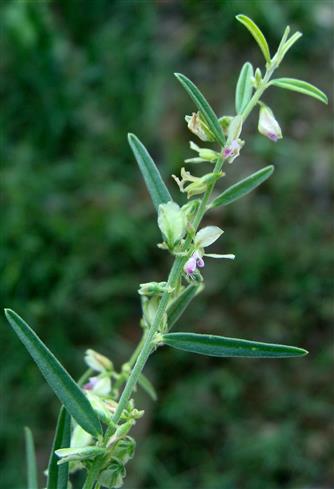POLYGALACEAE
Annual or perennial herbs, shrubs or trees. Leaves exstipulate, simple, alternate, opposite or whorled, sessile or petiolate, margin entire, rarely reduced and scale-like. Flowers bracteate, bracteolate, bisexual, zygomorphic, hypogynous, white, yellow or purple-red, sessile or pedicellate, in axillary or terminal racemes, panicles or spikes. Calyx persistent or caducous; sepals 5, free or connate at base; outer 3 small, inner 2 large (called Alae) petal-like or all 5 nearly equal. Petals 3 or 5, basally often connate; lower (median) one (called Keel) usually inflexed, carinate, sometimes with fimbriate or lamellate or papilionaceous apical appendages. Stamens 8,7,5 or 4; filaments free or variously united and forming a sheath open on upper side and trough-like; anthers basifixed, usually dehiscing by a single apical pore. Disc usually absent, if present annular or glandular. Ovary superior, 1 or 2-locular, compressed, 1 ovule per loculus, anatropous, pendulous, rarely ovules numerous on parietal placentas; style variously curved, usually wider above middle and hooked near apex; stigmas 1 or 2, capitate. Fruit usually a 2-loculed capsule, compressed, margins winged, toothed or not, loculicidal. Seeds usually 2, ovoid, globose or ellipsoidal, smooth or villous, strophiolate or not.
29 genera and about 900 species
